The Cold War isn’t over
Why Germany didn’t want to send Leopard 2 tanks to Ukraine
We always thought that the Cold War was over.
The Second World War is firmly embedded in history now; it ended in 1945, long before almost all of us were born. The Cold War that was its misbegotten stepchild died unmourned in 1991.
That’s wrong, Alexander Smukler of Montclair tells us.
Mr. Smukler, the Russian Jewish émigré who left Moscow in 1991, just before the Soviet Union collapsed, and who has spent half his life there, half here, says that memories of World War II led to Russia’s retention of the Cold War armaments that it said it had destroyed, and that those memories of siege and starvation and blood and death have led us to where we are now.
And he also says that if the West does not stop dithering and start arming the Ukrainians not only to defend themselves but to counterattack, Russia’s descent into near-medieval brutality and lawlessness will pay off.
“For more than 30 years, we lived with the assumption that the Cold War was over, but now we see that it was just temporarily on hold,” Mr. Smukler said. “The risk that this cold war will turn into a hot war is reaching a dangerous level today.”
Now, 11 months into the war — and remember, we say kaddish for 11 months after a parent or sibling dies, so that’s an emotionally laden period — “we are going to talk about tanks,” he said.
“Russia is much more prepared for escalation than the Western countries are, because of Russia’s stockpile of tanks and artillery. As far as I understand it, Russia never really went through real disarmament. The whole world thought the Cold War was over and destroyed most of its conventional weaponry, and a giant number of nuclear warheads. Now I seriously doubt that Russia disarmed. Instead, they just kept the Cold War munitions in stockpiles — and now they’re being used on the Ukrainian front.”
As we all know, Mr. Smukler said, last week high-level military delegations from more than 50 countries met at Ramstein, the American air base in Germany, to discuss the situation in Ukraine. “The most important issue was how and when the Western countries, especially NATO, will supply Ukraine with weapons and munitions to allow it not only to defend itself but to continue a counteroffensive.”
The meeting was held, Mr. Smukler said, “because everyone now understands that the war in Ukraine — we can call it a proxy war between the organized West and the Russian aggressor — has reached a very dangerous point.”
For now, as he has said in earlier stories, both sides have retrenched and regrouped. The Russians keep demolishing civilian infrastructure, and have had some progress in holding devastated grounds that once held cities and were full of life, but were reduced to smoking rubble by the time they were lost.
The Russians are not advancing. But they have been busy as they wait for spring.
“We all understand that Russia is preparing for major offensive operations on the Ukrainian front,” Mr. Smukler said. “It is not a secret that in the next two months we will be witness to an enormous battle in Ukraine. We don’t know exactly where — different experts give different possibilities — but everybody now is convinced that after months of regrouping, reorganizing its logistics, and training the 150,000 new troops that it’s holding behind its front lines — Russia will attack.”
Those 150,000 fighters-in-training, he said, are half of the 300,000 men Russia impressed into its army. Vladimir Putin — the angry dwarf whose apparent mad desire for the rebirth of the Russian empire, with him heading it as Peter the Great — sent about half of those men to be cannon fodder, but the other half, mainly in Belorussia, near the Ukrainian border, are “completing their training and will be able to provide sophisticated technical support to very complicated military and artillery systems, and tanks,” Mr. Smukler said.
“That training period will be over in a couple of weeks.”
Most sources whose work he reads, particularly from English and German reports, “are saying that they expect the Russians to start operations either at the end of February, when the ground still will be frozen, or at the end of April or the beginning of May, when the ground is dry again.” In other words, either before or after the muddy season, because no matter how high-tech war gets, in the end it is entirely physical.
Whether it’s sooner or later, “everybody agrees that Russia is preparing a gigantic military operation that according to them will smash Ukraine’s army and allow them to ‘liberate’ those parts of Ukraine they already have annexed” — Luhansk, Donetsk, Zaporizhzhia, and Kherson — “and nobody knows if Russia will move forward then to take cities like Kyiv and Kharkov,” Mr. Smukler said. “So there is no doubt that Ukraine not only has to be prepared to defend itself, and its whole front line” — about 1,000 miles — “but also it has to be prepared to take counteroffensive actions if it wants to kick the Russians out.
“So in the next few months we will have the bloodiest and most intense ground battle in Europe since the Second World War.
“And that brings us back to Ramstein.”
During that meeting, on January 20, as “everyone saw in the news, there was a huge discussion about how to supply Ukraine in order to help them at this dangerous point of the war,” Mr. Smukler said. “All military experts are absolutely in agreement that Ukraine needs much more sophisticated antimissile and antiaircraft systems, like the Patriot, and it needs long-range artillery, and most importantly, it needs tanks.
“Without tanks, modern armies are not able to do offensive operations. So only tanks meet the army’s need to move forward, and that is why the whole world is discussing who can provide them.”
The discussions are taking too long, he said. “In his speech that he gave during the meeting at Ramstein, President Zelensky” — of course that’s Volodymyr Zelensky, the astonishing former lawyer and more famously comic actor, Time magazine’s Person of the Year, who almost irrelevantly also is Jewish — “said exactly the same thing. He said, ‘Guys, we can thank you thousands of times for the support you already gave us, but it will not help us win the war. My hundreds of thanks to you does not mean that I have hundreds of tanks operating on the front lines.’
“Unfortunately, though, the Western world is slowly discussing it. Everyone has their own opinion, their own interest.”
The situation, Mr. Smukler said, is stark. “In order to hold against a future Russian offensive, not only to defend itself but for a counteroffensive, Ukraine needs between 300 and 400 heavy tanks.
“And there are only two groups of countries that can supply them.”
That’s the United States and the European Union.
The American tank, the Abrams, “is the heaviest tank in the world,” Mr. Smukler said. “It is extremely powerful and was used very successfully during the war in Iraq. We have about 4,000 of them in our stockpile.
“But” — of course there’s a but — “it’s extremely complicated military equipment, which can be operated only by a very well-trained team of three people. The training takes approximately 20 to 30 weeks.”
It’s also not easy to ship. “It weighs basically 74 tons.
“Also, it requires a very sophisticated and well-organized service system.” And it runs on a highly specific purpose-made, very expensive gas, which it guzzles.
So getting it to Ukraine, getting personnel to use and maintain it, and keeping it fueled takes time — and the Ukrainians don’t have that much time.
It is notable, Mr. Smukler said, that a few days after Ramstein, President Joe Biden said that he would send a few tanks to Ukraine. Until now, he’s offered only defensive equipment. “Now that situation is changed, and everybody has accepted the idea that the United States has to continue to provide help to Ukraine, and it has to send equipment that will allow Ukraine to go on the offensive. Biden did not want to escalate the conflict — no one wanted American missiles to hit Russian territory — but now that game is over.
“Ukraine needs much more sophisticated weaponry that will allow it to kick the Russians out, and in order to do that it needs tanks. In modern war, the infantry cannot liberate territory without tanks. Infantry runs behind the tanks.
“Tanks have nothing to do with defense. Tanks cannot defend. They can only move forward.”
So on the one hand, we have decided that the only way to help the Ukrainians free themselves from the Russian invader is to help it with its counteroffensive. The only way to do that is to give them tanks.
But are the only tanks they can get Abrams?
No. Germany already makes tanks, which it sells to other NATO countries with the proviso that they cannot use them other than in self-defense without Germany’s permission.
The Leopard 2 tanks are “smaller, much simpler, much more European-adapted than the Abrams,” Mr. Smukler said. “It is the main tank in NATO’s army since the late 1980s. So Ukraine’s top military leadership learned about it in their military academies. Also, it uses diesel, and Ukraine has plenty of diesel. And it’s much easier and less expensive to ship them to Ukraine because they’re already in Europe.”
So what’s the problem? The answer seems obvious. NATO should supply Leopards. But “the whole game in Ramstein was the German chancellor, Olaf Scholz, refusing to provide Leopards to Ukraine, and not allowing NATO allies to provide them either.”
It took Germany until Wednesday to make up its mind to send some tanks to Ukraine — until then, as Charlie Sykes, a founder of the Bulwark, said on his podcast, “the Huns are still dithering.” Poland decided to send some of their Leopards too.
But time is passing
There are logical reasons for European countries to hesitate about sending Leopard 2s. They need most of what they have to protect themselves; all they can send are the extras. (Of course, the question of how to protect themselves is different for each country, depending on how far they are from Russia.) So that’s always a tension.
But, Mr. Smukler said — this is his own opinion, he stressed, but given all his widely ranging sources, his access to Russian-language information, and his own firsthand knowledge of how Russians think — he believes there’s something else driving both the Russians and the Germans.
“In my personal opinion, the chancellor of Germany does not want to supply Leopards,” he said. “I realized that there is a psychological barrier keeping the German government, and especially the German chancellor and its minister of defense, from wanting to see Leopards on Ukrainian ground.
“The barrier is the thought that once again German tanks will be on the territory where the Germans were completely defeated by the Russians in World War II.
“People in both countries, Germany and Russia, have images of the Second World War at the backs of their minds,” he continued. “They think of the major tank battle in Kursk” — that fight, in 1943, involved about 6,000 tanks and was the biggest tank battle ever. It also was the end of Germany’s attempted offensive against the Russians, who took the offensive themselves.
“So I think that Germany is very reluctant to send tanks, because they understand that it would be like history repeating itself. Yes, they would be on the right side this time, but if they are defeated again, then morally and psychologically it would be very hard for the German people to accept.
“And the Russians would laugh. It would give them such energy, such pride, to defeat German tanks again, on the same battlefield.
“For the Russians, fighting on that battlefield would give them such energy. It would give them some meaning, some understanding of what they are fighting for.”
The meaning would be completely perverted; just because Putin began the war by saying he was fighting to de-Nazify Ukraine, that doesn’t make it true. The Ukrainians aren’t Nazis. The Germans no longer are Nazis. But that their glee would be based on a lie wouldn’t matter to the Russians.
“When I listened to speeches and read reports after Ramstein, when I listened to our generals and military leadership, I realized that they still do not understand our psychological moment,” Mr. Smukler said. “They do not understand why Germans, including the German chancellor and the parliament, do not want to supply tanks to the battlefield in Ukraine.
“They think that it will fuel the Russian army. They will feel that they are fighting the Nazis again. And that these Nazis will be operating German machines would give them such strength.
“On that battlefield, each Russian soldier will feel like his grandfather. He is there, fighting Nazis, on the Ukrainian territory where his grandfather fought, and maybe died, fighting Nazis.
“I am sure that the Germans fully understand this, and that the American do not. I have read several major articles by U.S. military experts saying they don’t understand why the Germans are so reluctant to send Leopards, that we are losing time and that Ukraine will lose the war. But they don’t understand that the Russians will fight against the Leopards three times, four times harder than they would against the Abrams.”
To come back to reality, “The Russians, and Putin personally, are working 24/7 now to prepare the offensive operation,” Mr. Smukler said. “If the situation does not change, if the Ukrainians do not get the military munitions that they requested from the West, I personally think that the Ukrainians will not be able to hold.
“I also think that sooner or later the Western allies will decide who and what to supply to Ukraine, but soon after that they will come to the point where the Ukrainians will not be able to operate what they’re sent — it’ll be so sophisticated — and NATO will have to supply the personnel. The Western countries will have to choose between continuing the fight on Ukrainian territory or having Putin defeat Ukraine. I predict that the future escalation of this conflict will lead us to the point where we will have to decide to give up, and then Ukraine will have to accept Putin’s peace conditions, or we have to send troops there. This point already is visible on the horizon.”
Let’s go back to the Cold War, not because we want to but because we must. “The Ukrainian president said that Ukraine needs between 300 and 400 tanks, but nobody mentioned that Russia has 10,000 tanks. They were stockpiled in Siberia; the Russians have reopened their military plants to repair and modernize them, and they’re training troops on how to use them.
“So Russia has a nearly unlimited source of tanks. They are old tanks — but they’re still tanks.
“That’s why I said the Cold War isn’t over. We didn’t think about it for 30 years, but Russia had everything stockpiled. Everything was waiting.”
Mr. Smukler also talked about a triangulated connection between Israel and the war in Ukraine. “The United States now is supplying artillery shells to Ukraine, and it’s taking most of them from its stockpiles in Israel,” he said.
What?
“There is a giant logistical center in Israel, where the United States stored its weaponry for more than 60 years. It’s a strategic reserve, to be used for American engagement in the Middle East. It was known that this reserve was there, and that Israel is not allowed to use it except in an emergency. Otherwise it is not allowed to take anything from that reserve without the permission of the president of the United States. Israel used this reserve during several military operations in Israel.
“Today, the United States is taking 300,000 artillery shells from the reserves. The Israelis are unhappy about it, but Ukraine badly needs them.”
Both sides use many artillery shells. “The Ukrainians use more that 90,000 in a month, and Russia uses four to seven times more,” Mr. Smukler said. “Some experts already are saying that today on the battlefield, and especially in artillery duels, it’s more intense than it was during World War II. The Russians are leveling everything.”
When they are finished with the towns they have leveled, including Soledar and Bakhnut, “there is nothing left,” Mr. Smukler said. “Nothing. People don’t understand this kind of conflict. Vietnam and Afghanistan are like computer games compared to what’s going on in Ukraine.”
So his message to the Americans and NATO — please hurry up. There’s no time to waste.
If we want to save Ukraine, we have to take action now.


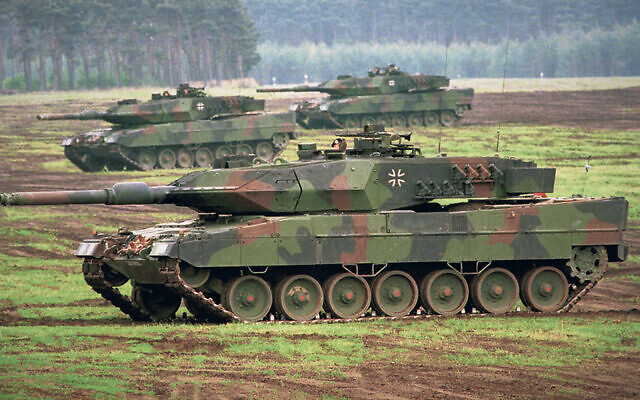
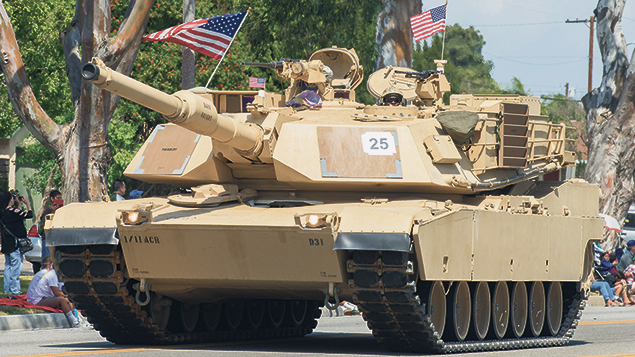

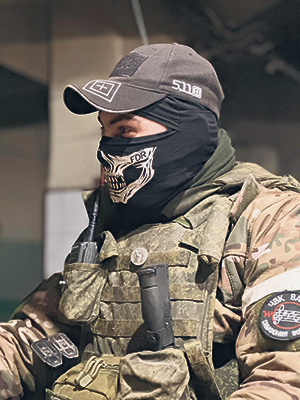
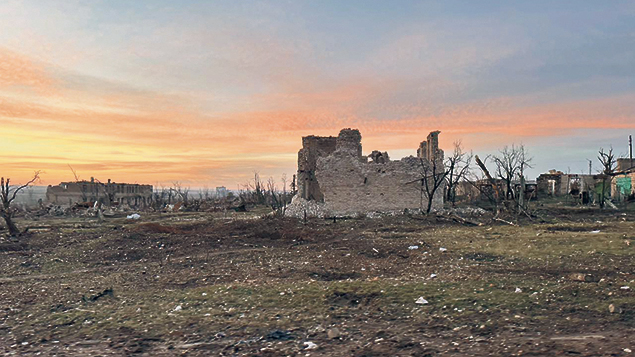
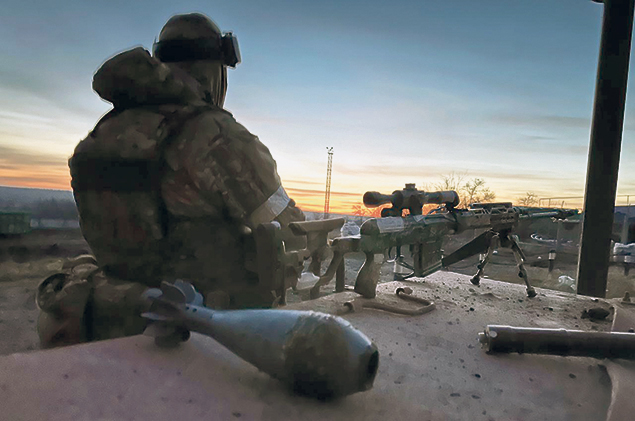
comments